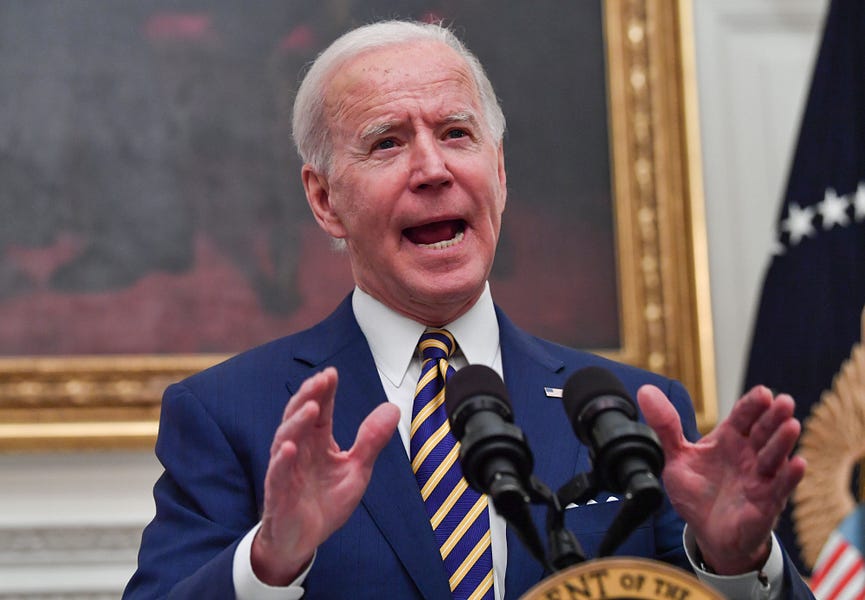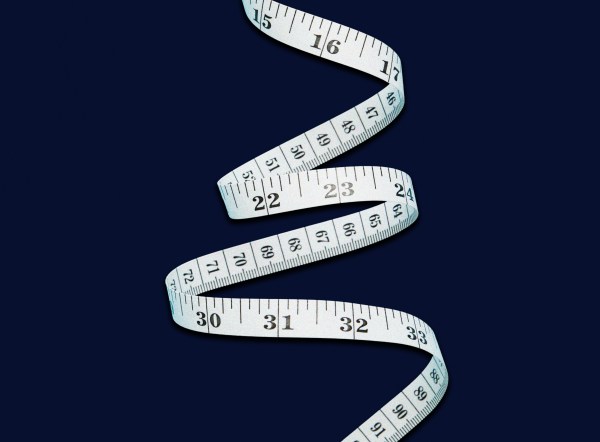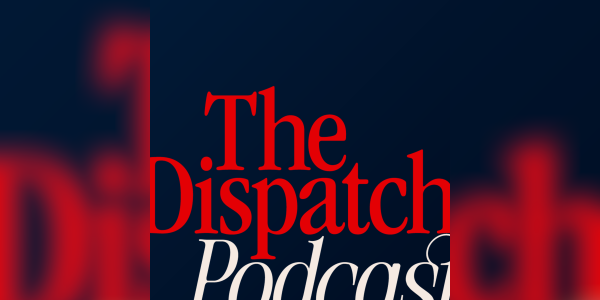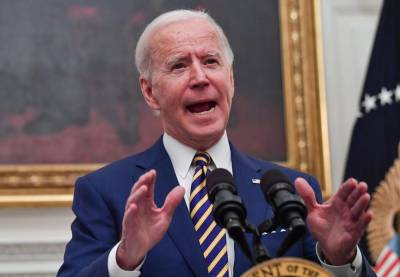Inauguration Day was a little weird for Never Trumpers (or at least for me). I mean, it was probably strange for everyone to see Donald Trump close out his presidency to the tune of “YMCA,” right? But what I mean is that while conservative Trump critics were glad to see the orange man depart political life (at least for the moment), we have an even keener sense than many observers of the deeper problems within the Republican coalition. It’s hard to feel joy knowing that few policymakers on your side are really thinking about policy these days. The political vehicle for center-right policy aspirations is being steered by deeply alienated Americans who view the entire point of politics and government as being a way to express their resentments against liberals and elites.
At the same time, few of us swooned at the inaugural festivities, cried over Zoom watch parties, or celebrated in any meaningful sense. Because while it could have been much worse—I am grateful every day that I didn’t have to vote for Elizabeth Warren or Bernie Sanders—many, many of the Democratic party’s policy priorities still seem terribly misguided to Never Trumpers.
Take, for example, the “economic impact payments” Democrats want to give most Americans, otherwise known as “$1,400 checks.” Most Americans received two rounds of checks last year: $1,200 per adult and $500 per child back in March, and $600 per person in December. For a married couple with two children making up to $150,000, that amounted to receiving $6,800 from Uncle Sam. Democrats now want to give most households a third set of checks to the tune of $1,400 more per person. When combined with the December amounts, this proposal would fulfill the popular call on the left for $2,000 checks.
This latest round would cost $464 billion in 2021, according to the Joint Committee on Taxation of Congress. Such sums used to be eye-popping even over a 10-year window. A worthwhile expenditure, you say? It is true that the Tax Policy Center estimates the checks would increase the 2021 income of the bottom fifth of taxpayers by 17 percent. However, the bottom fifth would receive just 15 percent of the benefits from this proposal, while the 28 percent of households making more than $100,000 would receive 32 percent of the benefits. That is to say, Democrats propose to spend $150 billion on a third round of free money for households making six figures.
This is simply an indefensible use of these funds. At best, the money might plausibly be justified as “stimulus” to strengthen economic recovery. However, that excuse ignores that the savings rate is already well above normal levels. Between 1993 and last February, the personal savings rate had exceeded 10 percent in just one month, back in 2012. The rate hit 13 percent in March and then 34 percent in April, after the first round of checks came in. It was still 13 as of November.
These high monthly savings rates accumulate over time. At the very least, if Americans are dipping into past months’ savings, they are doing so while continuing to save new income at very high rates. (Long ago, the nation regularly had double-digit savings rates, but today’s come even with the downward pressure of boomers retiring. When retirees draw down their nest eggs, that counts as negative savings and pulls down the personal savings rate.)
There will be no shortage of consumer spending once it is safe—and enjoyable—again for Americans to congregate at malls, theaters, and stadiums and to travel to Disney World and Yellowstone National Park. Which raises the second reason the “stimulus” rationale for indiscriminately handing more money out willy-nilly is absurd: We should not be stimulating in-person economic activity right now because we remain IN THE MIDST OF A GLOBAL PANDEMIC.
The poorly targeted nature of the first round of economic impact payments, back in March 2020, could be justified on the grounds that policymakers did not have time to figure out how to direct such aid to those who truly needed it. There was no such excuse in December, and there is none now.
In fact, given how much we have spent already on a dramatically expanded safety net, a strong case could be made for completely scrapping the third round of economic stimulus payments. Believe it or not, poverty is, in all likelihood, no higher than it was before the national emergency was declared last March. Researchers at Columbia University’s Center on Poverty and Social Policy reported last October that 15.5 percent of Americans were poor in January 2020. In December, they projected that the January 2021 poverty rate would be 15.1 percent in the event that Congress reauthorized the unemployment insurance provisions that were set to expire at the end of the year (which it subsequently did). What is more, those projections did not factor in the second round of the economic impact payments.
The safety net swelled enormously over the past year, including expansions in the generosity, duration, and coverage of unemployment benefits, more generous food stamp benefits and other food assistance, grants to small businesses for keeping people on the payroll, and the economic impact payments, to name just the most important policies. The four pandemic response bills signed into law last year came to more than $3 trillion combined. For comparison, the federal government spent $4.4 trillion in fiscal year 2019 on everything else that it funds.
Congress may need to extend at least some of the unemployment insurance provisions further, as they are set to expire in March and April, but the food stamp provisions are in place into June. Anti-poverty policy, by and large, has been up to the task.
Further, we have a debt problem. Even before the December coronavirus bill was signed into law, the Congressional Budget Office estimated that as a share of GDP, federal debt would hit an all-time record in 2023. (The previous high was in 1946, when debt had piled up so that we could win a world war.) It will then come close to doubling over this level by 2050. Some of you are saying that we face very low interest rates, so why not take the free money? But this debt will have to be refinanced down the line (since we’re not going to pay it down), and we cannot assume that we will enjoy the same favorable terms then that we do now. Higher interest rates in the future could crowd out private investment, and attempts to avoid them could spur inflation.
Even if you aren’t worried about the debt, there is an opportunity cost to spending $500 billion on badly targeted checks that aren’t needed to keep poverty down. The cost of the economic impact payments is about ten times the normal federal budget for primary and secondary education. If we must spend $500 billion, why not use it to expand summer school in order to get poor children caught up in their learning?
While the left continues to obsess about income and wealth inequality, and while the right seems not to care much about any kind of inequality, research has established that inequality of opportunity has likely widened notably during the pandemic. Opportunity Insights looked at participation last winter and spring in an online math platform called, “Zearn” that was used in many schools prior to the pandemic. After an initial drop, participation by elementary school students in the richest quarter of ZIP codes fully recovered before the school year ended. But participation was down 32 percent in the middle half of ZIP codes and down 41 percent in the poorest quarter. Remedying the learning deficits of the 2020-21 school year should be a bigger priority than breaking more records for safety net spending or stimulating an economy in which it is unsafe to fully participate.
The $1,400 checks have competition on the Worst Ideas of 2021 list—don’t get me started on the $15 minimum wage—but as one-quarter of the spending in President Biden’s opening $1.9 trillion package, the economic impact payments are an unfortunate priority for Democrats to pursue right now.
Scott Winship is a resident scholar and the director of poverty studies at the American Enterprise Institute.






Please note that we at The Dispatch hold ourselves, our work, and our commenters to a higher standard than other places on the internet. We welcome comments that foster genuine debate or discussion—including comments critical of us or our work—but responses that include ad hominem attacks on fellow Dispatch members or are intended to stoke fear and anger may be moderated.
With your membership, you only have the ability to comment on The Morning Dispatch articles. Consider upgrading to join the conversation everywhere.